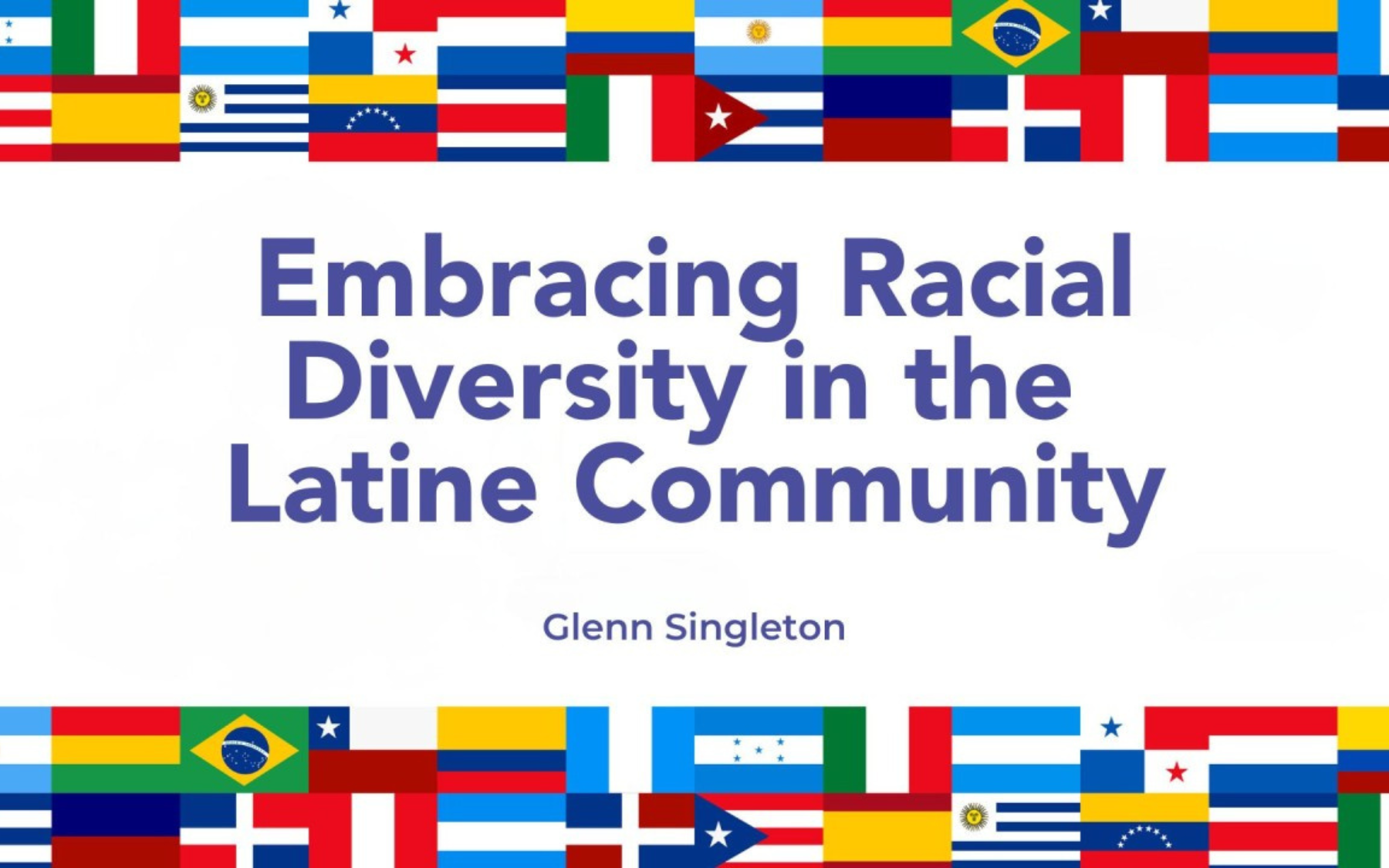By Glenn Singleton—October 14, 2024
As we close out Latine Heritage Month, it’s important to remember that celebrating and acknowledging the rich racial diversity within the Latine community should extend throughout the year. This diversity frequently goes unacknowledged, yet it plays a critical role in shaping the experiences and identities of Latine individuals across the United States and beyond.
The Latine community is not a racial monolith. It draws from a variety of racialized people, including Indigenous and African to European and Asian. This complexity poses strengths and challenges for Latine people, particularly when discussing issues of race and identity. Proximity to Whiteness has long influenced the experiences of some Latine individuals, going way beyond affecting their defined images of beauty and success to impacting systemic phenomena such as immigration policies to census categorizations.
The U.S. Census has long struggled to capture the racial identities of Latine people accurately. Many Latine individuals’ only option is to choose between identifying as “White,” “Black,” or “Other,” a limitation that erases the nuanced realities of their racial identities. This lack of representation in official data contributes to the invisibility of racial diversity within the Latine community, perpetuating racism, stereotyping, and misunderstanding.
In the context of immigration policy, proximity to Whiteness has sometimes afforded certain Latine people more favorable treatment by authorities. Conversely, those with darker skin or African and/or Indigenous features often face harsher realities. These stark disparities underscore the importance of acknowledging and addressing racial dynamics existing within Latine communities.
Read more on LinkedIn.




